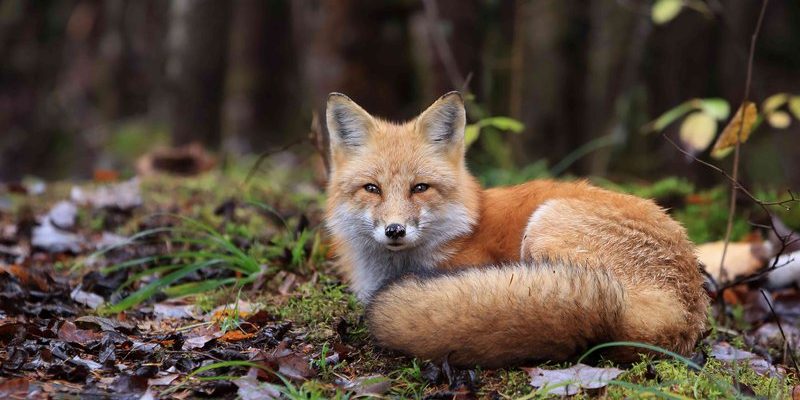
Encountering a red fox in the wild can be an exciting experience, but knowing how to handle it is important for both you and the fox. You see, red foxes are generally shy and elusive, preferring to avoid humans. However, if you find yourself face to face with one, it’s essential to understand their behavior and how to respond appropriately. Let’s dig into what steps you can take if you ever find yourself in this unique situation.
Understanding Red Fox Behavior
To make sense of how to approach a red fox encounter, let’s first take a look at their behavior. Red foxes are known for their cunningness and adaptability. They thrive in various environments, from forests to urban areas, which means you might just catch a glimpse of one during your next hike.
Foxes are primarily nocturnal, meaning they’re most active during the early morning and late evening. If you see one during the day, it could be a sign that food is scarce, or it might be checking out its territory. You might be wondering, “Is this fox going to approach me?” Generally, no. They prefer to keep their distance. Typically, if they see you, they might freeze for a moment out of curiosity before scampering away.
Recognizing their body language is key here. A fox that appears relaxed, with its ears forward and tail down, is likely comfortable in its environment. In contrast, if they seem agitated—like raising their tail or flattening their ears—it’s best to keep your distance and give them space.
Stay Calm and Assess the Situation
The first step when you encounter a red fox is to stay calm. I know, it’s easier said than done, especially if it’s your first wildlife encounter. Take a deep breath and assess what you’re seeing. Is the fox far away, or is it just a few feet from you?
If the fox is at a distance, enjoy the moment! Grab a few pictures if you can, but make sure you’re not getting too close. You want to observe without intruding. On the other hand, if the fox is too close for comfort, slowly back away without turning your back on it. This way, you can keep an eye on its movements.
Think of it like dealing with a startled cat. You wouldn’t rush towards it or make loud noises, right? Instead, you’d quietly leave it to its business. Foxes are the same—give them the time and space they need to feel comfortable.
Creating Space: How to Safely Move Away
If you find yourself too close to a red fox, creating space is crucial. Start by standing still for a moment; this allows the fox to assess the situation. If it seems curious and starts approaching, don’t panic! Instead, take a step back slowly. You want to retreat without making sudden movements.
Here are some handy tips for safely moving away:
- Take Small Steps: Sudden movements can startle the fox. Move slowly and deliberately.
- Avoid Eye Contact: Staring can be perceived as a threat. Look at the fox occasionally, but don’t stare directly.
- Keep Your Voice Low: If you need to speak, do so softly. Loud noises can frighten the fox.
- Turn Sideways: Instead of turning your back, angle your body to the side while you back away.
Remember, the goal is to leave the area calmly, allowing the fox to retreat with you. Just like you’d give space to a fellow hiker, extending that same courtesy to wildlife is essential.
When to Be Concerned: Signs of Aggression
There are times when a red fox might display signs of aggression. While foxes are typically shy and wary of humans, they can act defensively if they feel threatened or cornered. Here’s what to look out for:
If the fox is growling, showing its teeth, or standing its ground with an erect tail, it’s a clear warning. This behavior is rare, as foxes generally prefer to run away from potential threats. But if they feel backed into a corner or if they have cubs nearby, they may defend themselves.
In these situations, it’s even more important to keep your distance. Slowly moving back is essential, as this will give the fox room to escape. And remember, never approach a wild animal that’s acting aggressively—just like in a traffic jam, it’s better to yield than to push through!
What to Do If a Red Fox Approaches You
Now, what if the unexpected happens and a fox starts approaching you? This scenario is quite uncommon, but it can happen, especially if the animal has become too accustomed to human presence.
1. Stand Your Ground: Don’t run away. This could trigger a chase response in the fox. Instead, stand your ground and observe its behavior.
2. Make Yourself look Bigger: Raise your arms or open your jacket to appear larger. This can signal to the fox that you’re not a target and discourage it from coming closer.
3. Make Noise: If the fox continues to approach, make noise! Shouting or clapping can help scare it off. Just remember to keep your voice calm and assertive.
4. Back Away Slowly: If it seems safe, back away slowly while maintaining eye contact. Retreating calmly shows you’re not a threat and can help prevent the situation from escalating.
Ultimately, the key is to remain composed. Foxes are usually just as curious about you as you are about them!
Safety First: Avoiding Future Encounters
While encountering a fox can be thrilling, you might prefer to avoid close encounters altogether. Here are some strategies to minimize the chances of meeting one up close:
– Stay on Marked Trails: Stick to designated paths while hiking. This can reduce your chance of unexpectedly crossing paths with wildlife.
– Keep Food Secure: If you’re picnicking or camping, make sure to store food properly. Leaving food out can attract foxes and other wildlife.
– Be Aware of Your Surroundings: Pay attention to your environment, particularly in areas known for animal activity. Taking a moment to look around can help you spot wildlife from a distance.
– Travel in Groups: There’s safety in numbers! As foxes are less likely to approach a larger group, hiking with friends can decrease your chances of an encounter.
By being proactive, you can enjoy the beauty of nature while keeping both you and the local wildlife safe.
Appreciating Red Foxes from a Distance
At the end of the day, red foxes are beautiful creatures that play an essential role in our ecosystem. Observing them from a distance can be a delightful experience. Remember that while they might be cute, they are still wild animals, and their behavior can be unpredictable at times.
So, whether you’re hiking, camping, or just strolling through a local park, keep your eyes peeled for these clever creatures. If you do have a close encounter, you now know how to respond calmly and safely.
Just like spotting a shooting star, seeing a red fox can feel magical—so cherish that moment while respecting its space in the wild. You’ll walk away with a great story to share, feeling a little more connected to the nature around you.

